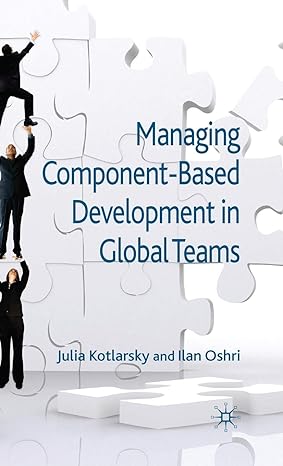Question
.14-31 Customer profitability in a manufacturing firm. Bizzan Manufacturing makes a component called P14-31. This component is manufactured only when ordered by a customer, so
.14-31
Customer profitability in a manufacturing firm. Bizzan Manufacturing makes a component called P14-31. This component is manufactured only when ordered by a customer, so Bizzan keeps no inventory of P14-31. The list price is $100 per unit, but customers who place %u201Clarge%u201D orders receive a 10% discount on price. Currently, the salespeople decide whether an order is large enough to qualify for the discount. When the product is finished, it is packed in cases of 10. When a customer order is not a multiple of 10, Bizzan uses a full case to pack the partial amount left over (e.g., if customer C orders 25 units, three cases will be required). Customers pick up the order so Bizzan incurs costs of holding the product in the warehouse until customer pick up. The customers are manufacturing firms; if the component needs to be exchanged or repaired, customers can come back within 10 days for free exchange or repair.
The full cost of manufacturing a unit of P14-31 is $80. In addition, Bizzan incurs customer-level costs. Customer-level cost-driver rates are as follows:
Order taking
$390 per order
Product handling
$10 per case
Warehousing (holding finished product)
$55 per day
Rush order processing
$540 per rush order
Exchange and repair costs
$45 per unit
Information about Bizzan%u2019s five biggest customers follows:
A B C D E
Number of units purchased6,0002,5001,3004,2007,800
Discounts given10%010%010% on half the units
Number of orders1012521812
Number of cases600250120420780
Days in warehouse (total for all orders)1418012140
Number of rush orders03006
Number of units exchanged/repaired02542580
The salesperson gave customer C a price discount because, although customer C ordered only 1,300 units in total, 52 orders (one per week) were placed. The salesperson wanted to reward customer C for repeat business. All customers except E ordered units in the same order size. Customer E%u2019s order quantity varied, so E got a discount part of the time but not all the time.
Required
1. Calculate the customer-level operating income for these five customers. Use the format in Exhibit 14-5. Prepare a customer-profitability analysis by ranking the customers from most to least profitable, as in Exhibit 14-7
2. Discuss the results of your customer-profitability analysis. Does Bizzan have unprofitable customers? Is there anything Bizzan should do differently with its five customers?
14-32
Variance analysis, sales-mix and sales-quantity variances. Chicago Infonautics, Inc., produces handheld Windows CE%u2122-compatible organizers. Chicago Infonautics markets three different handheld models: PalmPro is a souped-up version for the executive on the go, PalmCE is a consumer-oriented version, and PalmKid is a stripped-down version for the young adult market. You are Chicago Infonautics%u2019 senior vice president of marketing. The CEO has discovered that the total contribution margin came in lower than budgeted, and it is your responsibility to explain to him why actual results are different from the budget. Budgeted and actual operating data for the company%u2019s third quarter of 2012 are as follows:
Budgeted Operating Data, Third Quarter 2012
Selling Price Variable Cost per Unit Contribution Margin per Unit Sales Volume in Units
PalmPro $374 $185 $189 13,580
PalmCE 272 96 176 35,890
PalmKid 144 66 78 47,530
97,000
Actual Operating Data, Third Quarter 2012
Selling Price Variable Cost per Unit Contribution Margin per Unit Sales Volume in Units
PalmPro $365 $175 $190 10,120
PalmCE 288 94 194 32,200
PalmKid 110 75 35 49,680
92,000
Required
1. Compute the actual and budgeted contribution margins in dollars for each product and in total for the third quarter of 2012.
2. Calculate the actual and budgeted sales mixes for the three products for the third quarter of 2012.
3. Calculate total sales-volume, sales-mix, and sales-quantity variances for the third quarter of 2012. (Calculate all variances in terms of contribution margins.)
4. Given that your CEO is known to have temper tantrums, you want to be well prepared for this meeting. In order to prepare, write a paragraph or two comparing actual results to budgeted amounts.
Step by Step Solution
There are 3 Steps involved in it
Step: 1

Get Instant Access to Expert-Tailored Solutions
See step-by-step solutions with expert insights and AI powered tools for academic success
Step: 2

Step: 3

Ace Your Homework with AI
Get the answers you need in no time with our AI-driven, step-by-step assistance
Get Started


